QuickBooks® Request for Payment Import File Formats Invoicing
The Best Solution for Payment Processing in QuickBooks®
Today Payments is an Authorized Developer of Intuit offering a highly robust app that supports both QuickBooks’ desktop and online customers, provide merchants with the tools they need so they can focus more time on their customers and businesses, and less time on data entry.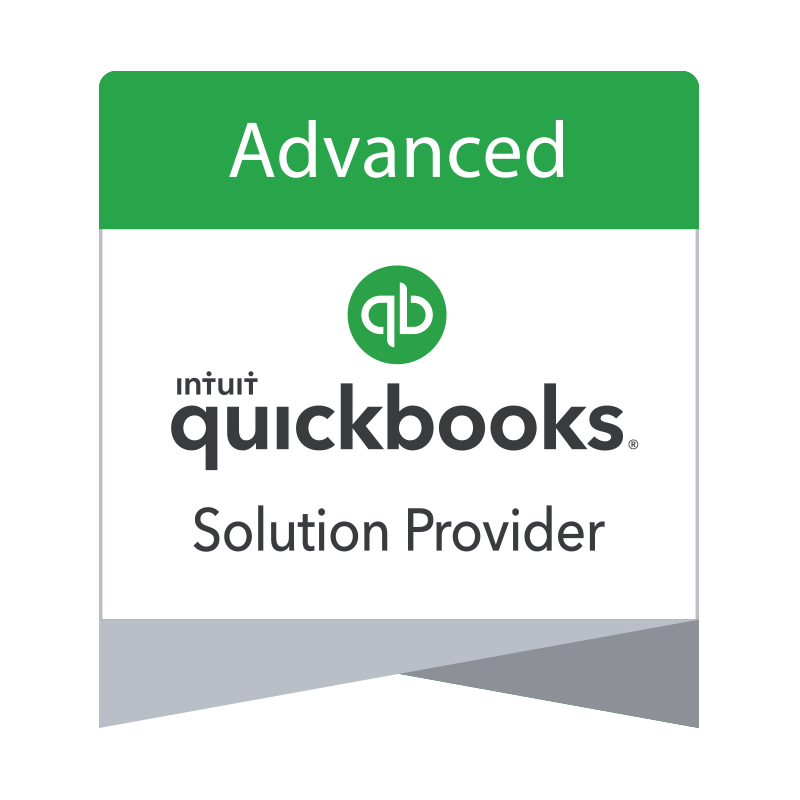
"Our Integrated payment solutions can save a typical small business owner more than 180 hours each year"
See
the features
QuickBooks® ACH, Cards, FedNow and Real-Time Payments
- Payment processing for all QuickBooks desktop, Pro, Premier, Enterprise and also QBO QuickBooks Online Our software is designed for simplicity and ease-of-use.
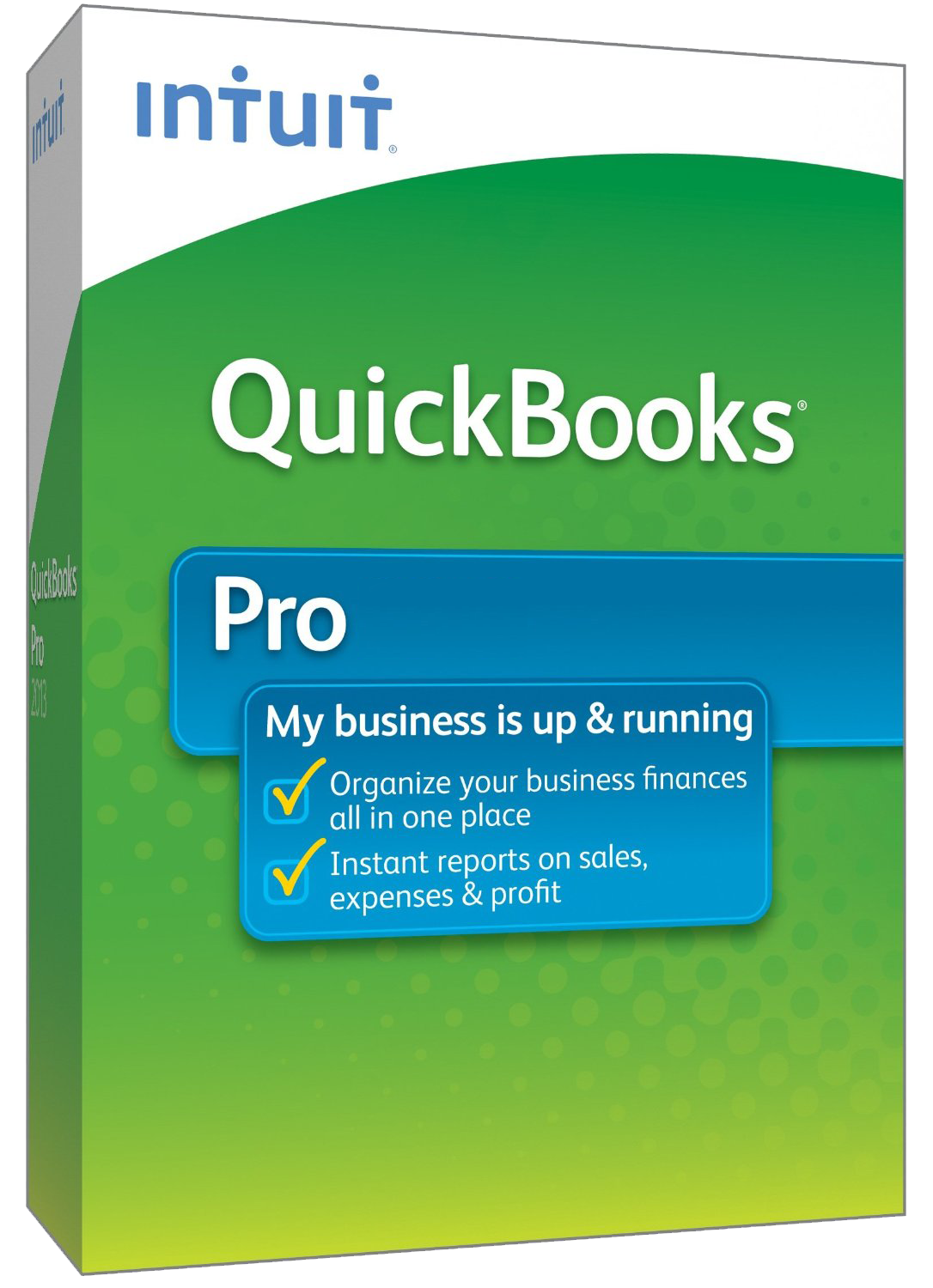
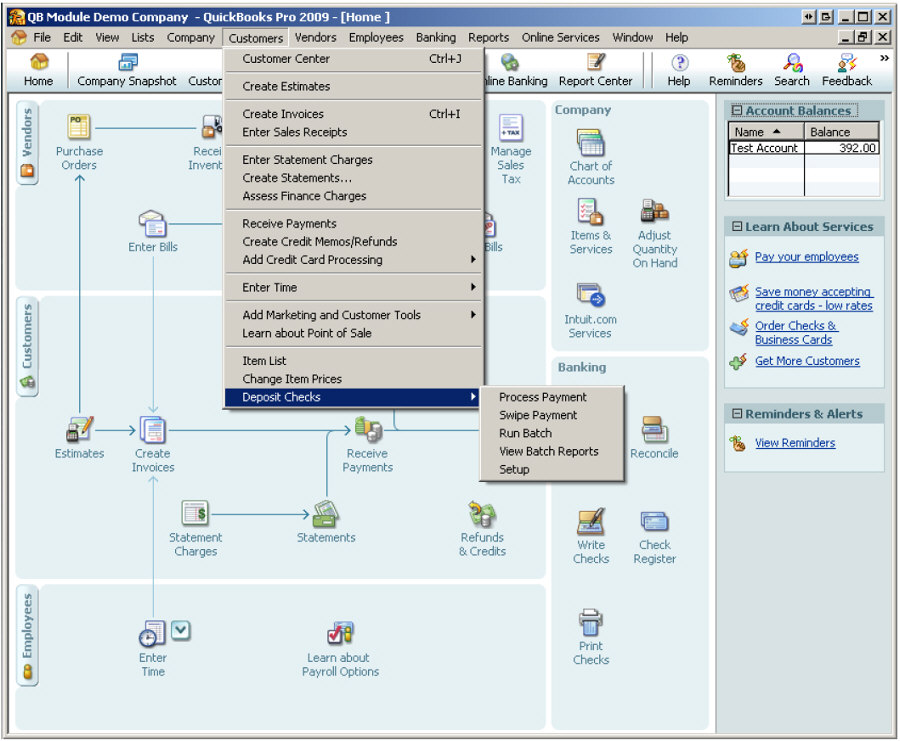
- ~ Automate Account Receivable Collection
- ~ Automate Account Payable Payments
- ~ One-time and Recurring Debits / Credits
Secure QB Plugin payment processing through QuickBooks ® specializes in the origination of moving money electronically.
Ask about our special:
Request for Payments
QuickBooks Request for Payment (RfP) integration for invoicing typically involves generating and importing file formats that can automate the payment request process. Depending on the type of payment system (ACH, FedNow Instant, or Real-Time Payments), the file formats and processes differ. QuickBooks supports various payment solutions through third-party integrations, allowing businesses to automate invoicing and payment requests using compliant file formats.
Here's how you can work with Request for Payment (RfP) file formats for invoicing in QuickBooks.
1. Understanding File Formats for Request for Payment (RfP) in QuickBooks
The file formats for importing payment requests into QuickBooks for different payment methods typically depend on the nature of the payment system:
- ACH (Automated Clearing House): Uses NACHA file format.
- FedNow Instant Payments: Uses ISO 20022 XML format.
- Real-Time Payments (RTP): Also uses ISO 20022 XML format.
For invoicing purposes, QuickBooks can generate invoices and export payment details to these formats via third-party integration, or the invoice data can be used to generate the required formats for submission to banks or payment gateways.
2. Request for Payment for ACH Invoicing in QuickBooks
A. Generate ACH Payment Requests in QuickBooks
QuickBooks can support ACH payments either through native payment systems or via third-party integrations.
- Create an Invoice in QuickBooks:
- Go to Sales > Invoices and
create an invoice with the necessary details such as:
- Customer information.
- Payment amount.
- Due date and payment terms.
- Go to Sales > Invoices and
create an invoice with the necessary details such as:
- Enable ACH Payments:
- If ACH is enabled for your QuickBooks account (through QuickBooks Payments or another integrated solution like SecureQBPlugin.com, Bill.com, Plaid, or Dwolla), your customer can pay via ACH.
- QuickBooks will record the payment once it’s processed.
B. Export Payment Data to NACHA Format
If you need to upload an ACH batch payment request to your bank using the NACHA format, you’ll need to export the invoice payment details from QuickBooks.
- Export Payment Data from QuickBooks:
- Navigate to Reports and generate a report such as Customer Balance Detail or Transaction List by Customer to extract relevant payment data.
- Convert to NACHA File:
- Use a third-party tool like
TodayPayments.com,
ACH Universal or Plaid to convert the exported CSV file
to NACHA format. The NACHA file will include details like:
- Bank account numbers.
- Routing numbers.
- Payment amounts.
- Use a third-party tool like
TodayPayments.com,
ACH Universal or Plaid to convert the exported CSV file
to NACHA format. The NACHA file will include details like:
- Submit NACHA File to Your Bank:
- Upload the NACHA file to your bank’s portal for batch ACH processing.
3. Request for Payment for FedNow Instant Payments in QuickBooks
FedNow Instant Payments allow real-time, immediate transfers, and QuickBooks can be integrated with third-party services to manage these payments.
A. Generate FedNow Instant Payment Request in QuickBooks
- Create an Invoice in QuickBooks:
- As with ACH, start by creating an invoice in QuickBooks.
- Export Payment Data:
- Export payment details such as customer information, amount, and invoice reference from QuickBooks.
B. Convert to ISO 20022 XML for FedNow
FedNow requires the ISO 20022 XML format to process payments. You’ll need to convert the invoice data from QuickBooks into this format.
- Use a Payment Provider for Conversion:
- Use third-party solutions like TodayPayments.com, Finastra, Volante Technologies, or Finix Payments to convert the payment data into ISO 20022 XML.
- The XML file will include:
- Message identifier.
- Payment amount.
- Remittance information.
- Payer and payee bank details.
C. Submit to FedNow Payment Processor
- Upload the ISO 20022 XML File:
- Submit the file to your payment provider or bank that supports FedNow Instant Payments.
- Track Payment Status:
- Payments will be processed in real time, and QuickBooks can be updated accordingly either manually or via automated integration.
4. Request for Payment for Real-Time Payments (RTP) in QuickBooks
Real-Time Payments (RTP) allow immediate payment transfers and QuickBooks can be integrated with RTP-enabled providers to automate invoicing and payments.
A. Generate RTP Payment Requests in QuickBooks
- Create an Invoice in QuickBooks:
- Create an invoice with customer details, payment amounts, and payment terms in QuickBooks.
- Export Payment Data:
- Export the payment details from QuickBooks to a CSV or Excel file for further processing.
B. Convert to ISO 20022 XML for RTP
RTP also requires the ISO 20022 XML format for processing payments.
- Use a Third-Party Provider:
- Use an RTP provider (such as TodayPayments.com, The Clearing House, Finix Payments, or Dwolla) to generate the ISO 20022 XML file from the QuickBooks export.
- The XML file should include details like:
- Transaction identifiers.
- Payment amount.
- Remittance details (e.g., invoice number).
C. Submit RTP Payment Request
- Upload the RTP File:
- Upload the ISO 20022 XML file to your RTP-enabled payment provider for real-time payment processing.
- Track Real-Time Payment Status:
- RTP payments will settle instantly. Track the payment status through the RTP provider and ensure that QuickBooks reflects the payment by marking the invoice as paid.
5. Using Third-Party Integrations to Streamline RfP File Formats in QuickBooks
To manage different payment types (ACH, FedNow, RTP) and their respective file formats, you can use third-party integrations to streamline the process within QuickBooks. Popular solutions include:
- SecureQBPlugin.com: Offers Same-Day ACH, FedNow, Real-time Payments and all Cards integrating into QBO and QuickBooks Enterprise versions
- Plaid: Offers ACH and real-time payments integration, simplifying the process of importing/exporting payment data between QuickBooks and payment systems.
- Bill.com: Provides ACH processing and integrates with QuickBooks to manage invoicing and payments.
- Dwolla: Supports both ACH and RTP payments and integrates with QuickBooks Online.
- Finix Payments: Provides real-time and FedNow payment solutions with support for ISO 20022 XML format.
- Finastra: Specializes in FedNow and RTP processing for business banking and integrates with accounting systems.
These platforms offer automated workflows that handle file formatting and communication between QuickBooks and your payment provider.
Conclusion
Using Request for Payment (RfP) file formats such as NACHA for ACH payments and ISO 20022 XML for FedNow Instant and Real-Time Payments (RTP), you can manage invoicing and payments through QuickBooks effectively. While QuickBooks doesn’t natively support these formats for importing, third-party integrations provide seamless workflows for generating and submitting payment requests. By leveraging these tools, you can automate the invoicing and payment process, ensuring accurate and efficient financial management.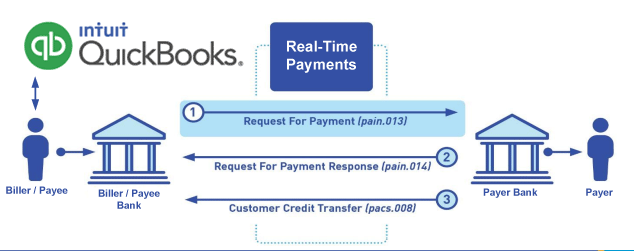
Call us, the .csv and or .xml Request for Payment (RfP) file you need while on your 1st phone call! We guarantee our reports work to your Bank and Credit Union. We were years ahead of competitors recognizing the benefits of RequestForPayment.com. We are not a Bank. Our function as a role as an "Accounting System" in Open Banking with Real-Time Payments to work with Billers to create the Request for Payment to upload the Biller's Bank online platform. U.S. Companies need help to learn the RfP message delivering their bank. Today Payments' ISO 20022 Payment Initiation (PAIN .013) show how to implement Create Real-Time Payments Request for Payment File up front delivering message from the Creditor (Payee) to it's bank. Most banks (FIs) will deliver the message Import and Batch files for their company depositors for both FedNow and Real-Time Payments (RtP). Once uploaded correctly, the Creditor's (Payee's) bank continuing through a "Payment Hub", will be the RtP Hub will be The Clearing House, with messaging to the Debtor's (Payer's) bank.
Our in-house QuickBooks payments experts are standing ready to help you make an informed decision to move your company's payment processing forward.
Pricing with our Request For Payment Professionals
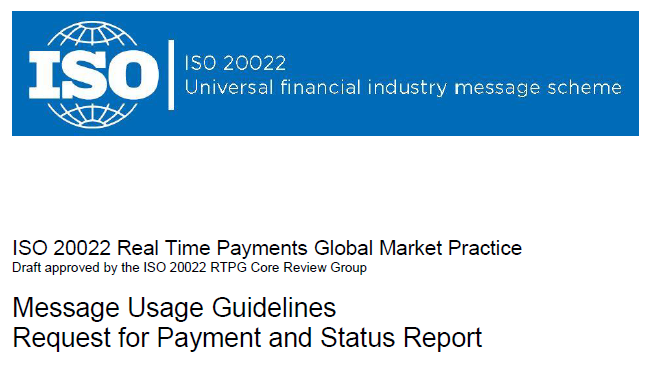
1) Free ISO 20022 Request for Payment File Formats, for FedNow and Real-Time Payments (The Clearing House) .pdf for you manually create "Mandatory" (Mandatory data for completed file) fields, start at page 4, with "yellow" highlighting. $0.0 + No Support
2) We create .csv or .xml formatting using your Bank or Credit Union. Create Multiple Templates. Payer/Customer Routing Transit and Deposit Account Number may be required to import with your bank. You can upload or "key data" into our software for File Creation of "Mandatory" general file.
Fees = $57 monthly, including Support Fees and Batch Fee, Monthly Fee, User Fee, Additional Payment Method on "Hosted Payment Page" (Request for file with an HTML link per transaction to "Hosted Payment Page" with ancillary payment methods of FedNow, RTP, ACH, Cards and many more!) + $.03 per Transaction + 1% percentage on gross dollar file,
3) Payer Routing Transit and Deposit Account Number is NOT required to import with your bank. We add your URI for each separate Payer transaction.
Fees Above 2) plus $29 monthly additional QuickBooks Online "QBO" formatting, and "Hosted Payment Page" and WYSIWYG
4) Above 3) plus Create "Total" (over 600 Mandatory, Conditional & Optional fields of all ISO 20022 Pain .013) Price on quote.
